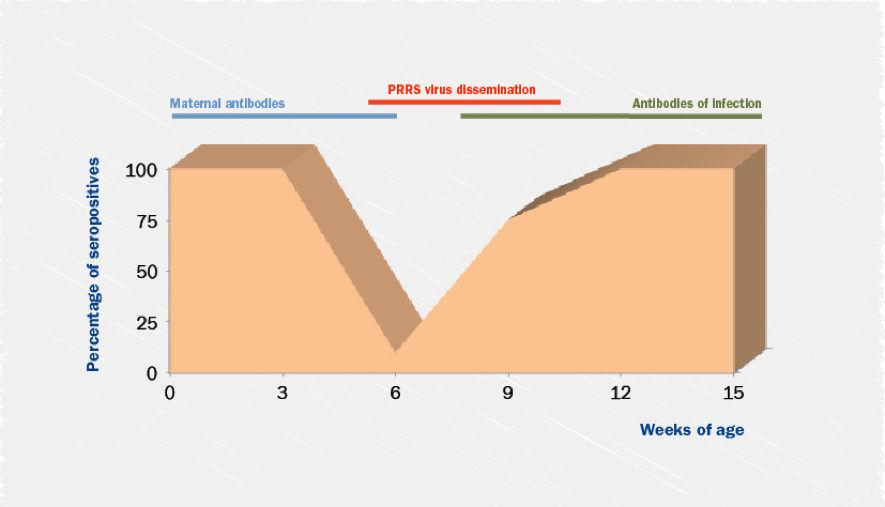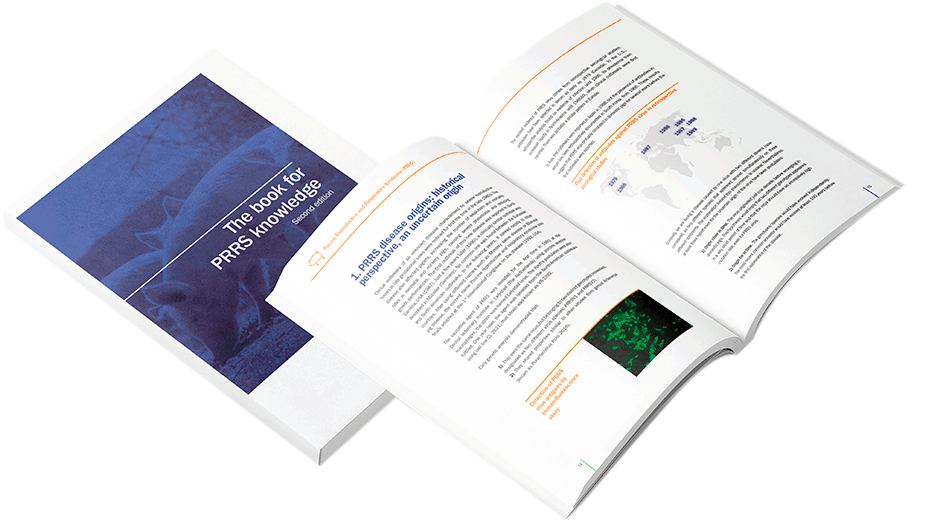In a PRRS stable farm, whereby no recent outbreak of PRRS and that the sows are vaccinated every 4 months, what do we expect to see from the piglet’s titre? Will maternally derived antibodies (MDA) affect serology profile of the piglets and is it a good sign to see more seronegative or more seropositive piglets?
Live attenuated vaccines applied to the entire population in regular periods of 4 months develop a serological response in most sows that is consolidated with repeated vaccinations (Pedersen, K. et al. 2021), but it must be said that the titres reached can be variable depending on whether have been exposed to wild virus or not and how long before.
The antibodies detected in piglets up to 6-10 weeks of life are those derived from acquired maternal immunity and therefore if the sows have developed a response, it will pass to the piglets.

Fig 1. Immunisation of piglets
If wild virus circulations are not produced again, the rate of antibodies in the mothers will go down and consequently also in the piglets, shortening the duration of maternal antibodies. But the rate of positive piglets should continue being initially high and decline faster with age (higher percentage of negative piglets).
The fact that the percentage of negative piglets increases with age should be read as a positive fact, since it would indicate that the field virus is not circulating, while if these negative piglets are detected during the lactation phase, it could indicate that sow’s vaccination is not being carried out adequately.
If you want to know more about PRRS vaccination read out chapter: Vaccinology
1. Pedersen, K.; Kristensen, C.S.; Kvisgaard, L.K.; Larsen, L.E. Impacts of Quarterly Sow Mass Vaccination with a Porcine Reproductive and Respiratory Syndrome Virus Type 1 (PRRSV-1) Modified Live Vaccine in Two Herds. Vaccines 2021, 9, 1057.
You can ask your own question! Visit Pig333.com and submit your question to the experts.

Marcovetgrup S.L. – Spain



